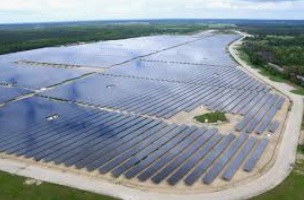Do not Panic, Prepare yourself for the pandemic--God forbid tomorrow, it could be me or you
Today Amitabh Bachchan and his son Abhishek, daughter in law Aishwarya and granddaughter Aradhya were tested COVID-19 positive. But frankly speaking, it did not surprise me. Doctors have already warned that nearly 30 to 40 % of the population would be infected by it, which means one out of three persons at least will be affected by it. The disease is so contagious that those who are taking utmost precautions would not be spared by it—Amitabh Bachchan is no different.Do not panic, prepare yourself for Corona before it attacks you.
- Wash your hands every two hours, it would prevent the spread of Coronavirus to others and to yourself.
- Avoid touching your hands with your Mouth, Nose and eyes.
- Drink hot water (at least 150 ml) every two hours and also gargle if possible. It would minimize the COVID-19 virus in your mouth and windpipe. So even if Corona attacks you, its intensity would be very low.
- Always BRUSH your teeth before sleeping and gargle with warm salty water. (it is very important). When you sleep for 7-8 hours, COVID-19-- if it is in your body would multiply eating food which is in your mouth or in the windpipe. If you clean it before sleeping, the chances of multiplication would reduce considerably.
- Have supplementary doses of Vitamins mainly Vitamin C but not in large quantities. On average our body needs 100 mg Vitamin C every day.
- Take potion (काड़ा) that prevents viral diseases every day or make it at home. Take one leaf of TULSI, a Giloy leaf, a pinch of tea and kali mirch, a leaf of dalchini (add whatever is available), boil it and then, in the end, add a few drops of lemon juice/concentrate take in three-four times a day. It would not only improve your immunity but would also clear COVID 19 in your throat.
WHAT TO DO WHEN YOU GET COVID-19
1) First thing that you are very lucky as it was diagnosed in time. Unfortunately, in 60 -70 % cases people do not get to know of it and keep spreading it to their near and dear ones.
2) 2) ISOLATE yourself and listen to very light music of your choice (it would relax your brain from tensions) and all your organs would fight against CORONA. Forget all the worries of the world and only think positive to cure yourself. Always remember a person with tension free mind recovers 50 % faster than a person with tension so shun unnecessary worldly tensions.
3) 3) BESIDES FOLLOWING THE INSTRUCTIONS OF COVID-19 EXPERT DOCTORS, You must be in regular touch with your family physician or a doctor you trust. Apprise him of every development and REMEMBER YOUR FAMILY PHYSICIAN KNOW YOU FOR AGES, HE KNOWS ABOUT YOUR BODY MORE THAN YOU AND WILL HELP YOU UNDERSTANDING THE TREATMENT GIVEN BY A COVID-19 DOCTOR.
1) 4) STRICTLY FOLLOW THE PREVENTIVE MEASURES AS MENTIONED. AND FOLLOW ALL THE INSTRUCTIONS GIVEN BY YOUR COVID-19 DOCTOR and family physician...
5) KEEP HYGIENE DO NOT ENTERTAIN ANYONE EVEN YOUR FAMILY MEMBERS. DO NOT SHARE ANYTHING with your family members WHICH MAY CREATE PANIC AMONG YOUR DEAR ONES.
3) 6) NO ONE GUARANTEE THAT all these things would save you from COVID-19, but it is also a fact that your chances of entering into THE CLLUB of “COVID-19 DEAD” would reduce substantially.
Ends.
BY Vijay Thakur, Special Representative, The Statesman, vijaythakurx@gmail.com





































